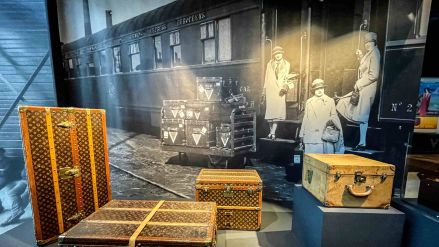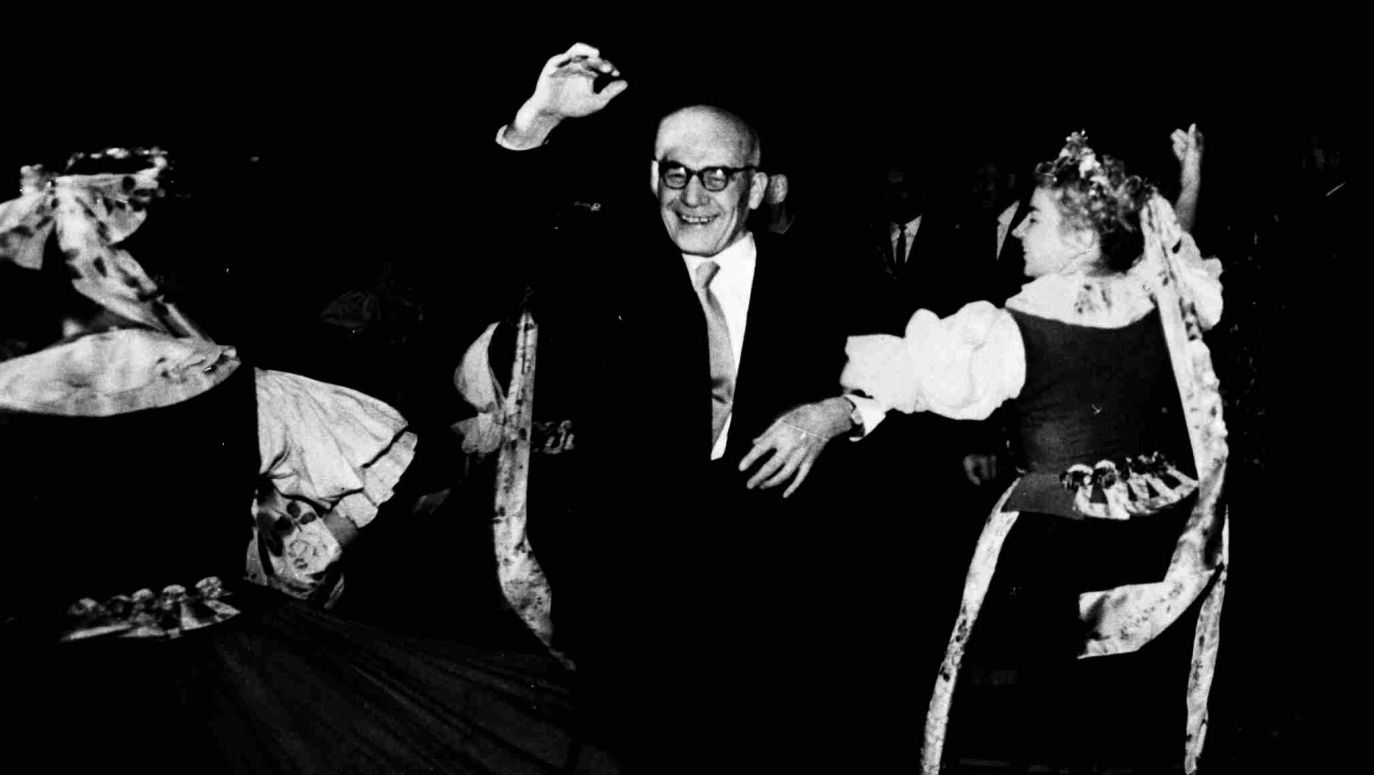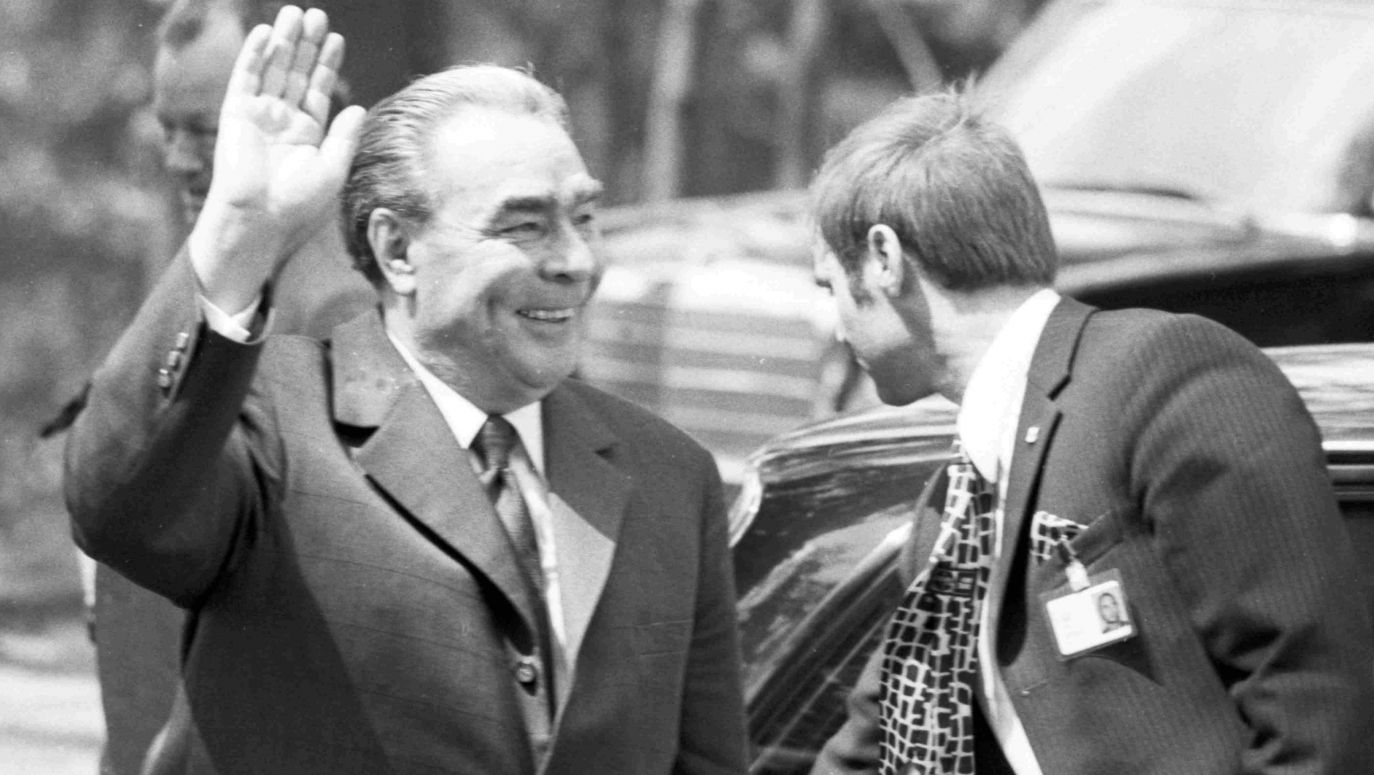First secretary on target, or attempts that weren’t
06.12.2023
Leaders in the people’s democracies were protected from the working people by a number of agents, hard currency wasn’t spared for modern equipment either, and almost every plot matured under the watchful eye of the secret services and was nipped in the bud. However, there were failed assassins who managed to put the entire security system on alert.

The inaugural run was set for 4 October 1883.
see more
In spite of all this, on 15 July 1959, at 14:30, a bomb hidden in a treetop exploded in Armii Czerwonej Street in Zagórze, then on the outskirts of Sosnowiec. According to the local newspaper, “Trybuna Robotnicza”, a column with party dignitaries was expected to pass through there. Since the cavalcade was a little late, the explosion occurred when the convoy’s first vehicle was at a safe distance. Anyway, the most important guests weren’t inside.
Although the bomb caused more noise than damage, the stain on the hosts’ honour was evident. The attempted assassination took place not only in the sister People’s Poland, but also in the workers’ town of Sosnowiec, where Edward Gierek was raised and where his family lived.
The furious Khrushchev was somehow placated, but the security machine looking for the subversive went into action anyway. However, the operation codenamed “Hidden” was an uphill struggle: workers who were renovating the facades of the houses along which the column of VIPs passed were detained, but none of them had any idea of the event. A tracking dog led the secret service officers to a certain property, but it turned out that the animal had run after a woman calling for help, who was scared of the German shepherd chasing her. In the street, at the site of the attack, a watch case was found, which was supposed to start the time mechanism of the charge – so all the local watchmakers were contacted. It quickly turned out that this was a false lead, because the watch had been deliberately planted by the attacker.
Subsequent leads in the rumour-ridden Zagłębie region also went nowhere, and the only result of the surveillance of the inhabitants was a bag of denunciations about who was stealing and who was throwing drunken parties.
After checking over six thousand suspects, the terrorist still remained elusive. It was decided to discontinue the investigation due to lack of progress, and at the end of February 1961 everything returned to normal. Not for long.
Testimony of an electrician
At the beginning of December that year, Władysław Gomułka returned to Zagłębie again. This time, without a foreign guest, he was to take part in the celebrations in one of the mines. The security agents apparently believed that nothing happens twice, and although they checked the area where comrade “Wiesław” was supposed to be moving, they did it routinely and poorly.
Meanwhile, the terrorist prepared very carefully. Now, he couldn’t hide the bomb in the treetops being bare at this time of year, so he built it into a roadside post on Krakowska Street, where a party convoy was due to pass. However, he lost his cool again and detonated the device before the limousine carrying the first secretary arrived.
The explosion was so strong that if the bomber had been patient, Gomułka’s life would have been in serious danger. Shrapnel damaged nearby cars and nearby houses, injuring two people. On the other hand, it is not entirely clear whether Gomułka was actually in this column, because the local commander later boasted that he had prudently sent the government limousines along a known route and led the cars of the most important guests along a side road.
It is known, however, that when Gomułka learned about another attempt on his life in such a short time and in almost the same place, he was furious. So an even tougher investigation was launched, but this time the investigators were wiser because of the experience of the previous one.
The breakthrough was the discovery of pincer marks on the bomb’s electrical cable. Ultimately, 70 people were selected who may have had the tools needed to construct the charge. At dawn, policemen and Security Service agents entered the apartments of all the suspects. Almost at the last minute, Stanisław Jaros, an electrician who was not employed at the time, was added to the list of those under surveillance, and that’s what caught the investigators’ attention.
While in custody, he was co-opted into his cell by a Security Service agent, an educated man who pretended to be a supporter of the fight against communism and encouraged him to honestly confess his guilt. A humble electrician, a loner, and a hater of communism, he succumbed to persuasion. He admitted to both attacks, although he claimed that he did not want to kill the first secretary or his guests, but only to express opposition to the authorities and, at the same time, ridicule the Security Service officers. He also admitted to minor acts of sabotage that he had allegedly committed.
He was sentenced to death. The State Council did not exercise its right of pardon. Stanisław Jaros was hanged on January 5, 1963. No one mentioned the attacks in the media until the end of the Polish People’s Republic.
Władysław Gomułka ruled until 1970. He was one of the people responsible for the massacre on the Coast in December of that year. The militia and army then shot at people protesting against the increase in food prices. More than 40 people were killed and over a thousand were injured. Gomułka, removed from power, had nothing to reproach himself with. He explained his actions this way: “In order to maintain public order, the authorities must use violent means in such cases, including the use of firearms. This is fully justified and legitimate”. He died in September 1982 and was buried with honours.
Death of a doppelgänger?
The attacks on Gomułka were an exception. One of the more mysterious attacks was the attempted assassination of Comrade Bolesław Bierut, the acting president of Poland and later leader of the Polish People’s Republic.
In February 1945, as Marcin Szymaniak writes in his book “Polskie zamachy” [“Polish Assassination Attempts”], a man dressed in the uniform of an NKVD officer entered the French Hotel in Kraków, where Bierut was supposed to be staying. This did not attract anyone’s attention, because such a sight was not unusual at that time. The officer waved his ID card carelessly and calmly walked past the agents guarding the entrance to the corridor where the apartment of the most important communist in Poland at that time was located.
The alleged officer in a Soviet uniform disappeared around the corner of the corridor and, unseen by the guards, opened the door to the room. A man with a distinctive mustache raised his head from behind the desk. The officer fired a shot, hitting the man in the head. After a short escape, the assassin fell into the hands of security agents. It was never revealed who he really was, although based on his determined manner of action, we can guess that he was a soldier of the Polish resistance movement.
The man killed in the apartment was most likely Bierut’s lookalike who was traveling with him. On the other hand, as the author of the above-mentioned book points out, despite the strict secrecy surrounding the whole affair, rumours persisted in party circles for a long time that the real Bierut had died in the attack and that the highest state offices were later held by a doppelgänger.
Bolesław Bierut supervised the fraudulent elections to the Legislative in January 1947, on which he based his power. He diligently expanded and scrupulously supervised the apparatus of repression in Poland. It was during his rule that millions of people were imprisoned and thousands of soldiers who fought against the occupiers were executed. Bierut died in March 1956 in Moscow, where he was staying at the invitation of the 20th Communist Congress of the Party of the Soviet Union, two days after Nikita Khrushchev delivered a report on Stalinist crimes.
Hit Honecker with a Lada
Communism, as is commonly known, also had many opponents in other countries of the so-called people’s democracy. In 2014, the former bodyguard of Erich Honecker, the communist leader of the German Democratic Republic, published a book in which he described the secrets of his principal, his weaknesses, clumsiness, but also dangerous moments in his career.
Bernd Brückner’s memories include, among others a description of Honecker’s visit to the Ural Mountains, where the latter took part in a concert organised in an open space. The guards of the head of the communist party of the GDR had to quickly evacuate him because drunk Russians started throwing vodka bottles at him. Surprised, Honecker could not understand how such an affront could happen to him in the Land of the Soviets, to which he had always been loyal.
The real danger was said to have occurred on New Year’s Eve 1982. As usual, there were Stasi agents stationed every few dozen meters along the route of the party’s car column. However, a driver entered the convoy and tried to stop Honecker’s car with his Lada. The idea turned out to be too daring: the driver, unable to catch the general secretary, killed one of the policemen and committed suicide.
Erich Honecker was responsible for expanding a network of services spying on their own citizens on an incredible scale. He was known for his passion for luxury, he loved expensive cars, although he never had a driving license. In the trial brought against him after German reunification, he was accused of, among other things, corruption and crimes committed during the Cold War, including the deaths of over 170 people shot while trying to escape from the GDR to the West.
Honecker argued to the end: “I am not responsible for the deaths of refugees shot at the border, I didn’t embezzle anything or enrich myself at the expense of the nation, I did not live in luxury, I do not have a Swiss bank account. I am convinced that history will prove me right”. He ultimately died untried in May 1994 in Chile.
Shots at cosmonauts
For nearly two decades, Leonid Brezhnev was at the helm of the Soviet Union, and indeed the entire Eastern Bloc. On January 22, 1969, he was not supposed to be the star of the parade taking place near the Kremlin. The biggest stars were cosmonauts returning from space missions. The event was watched by millions of people across the USSR.

 SIGN UP TO OUR PAGE
SIGN UP TO OUR PAGE
 The visit of the Soviet general secretary was a delicate matter in itself. The leaders of the two sister nations weren’t very fond of each other, so the safety of the guest from Moscow took on special significance. Operation “Friendship”, as that was the codename for the measures taken to secure the visit, consisted of a special surveillance of the entire itinerary. All the so-called “elements” who were suspected of opposing the authority of the people, even in the slightest degree, were given special “care”. Anyone who owned a hunting rifle, had to deposit it at a Citizens’ Militia commissariat. The roads and bridges through which the comrades-carrying column was to pass were repeatedly secured and checked by sappers, and the route was heavily patrolled by agents in plain clothes.
The visit of the Soviet general secretary was a delicate matter in itself. The leaders of the two sister nations weren’t very fond of each other, so the safety of the guest from Moscow took on special significance. Operation “Friendship”, as that was the codename for the measures taken to secure the visit, consisted of a special surveillance of the entire itinerary. All the so-called “elements” who were suspected of opposing the authority of the people, even in the slightest degree, were given special “care”. Anyone who owned a hunting rifle, had to deposit it at a Citizens’ Militia commissariat. The roads and bridges through which the comrades-carrying column was to pass were repeatedly secured and checked by sappers, and the route was heavily patrolled by agents in plain clothes.






